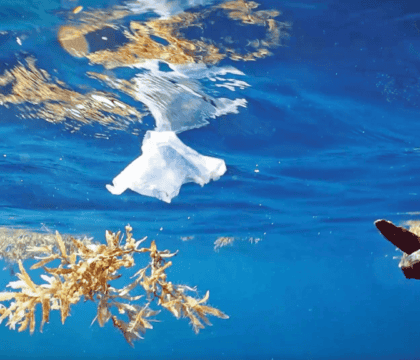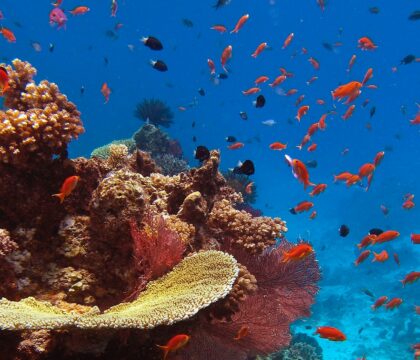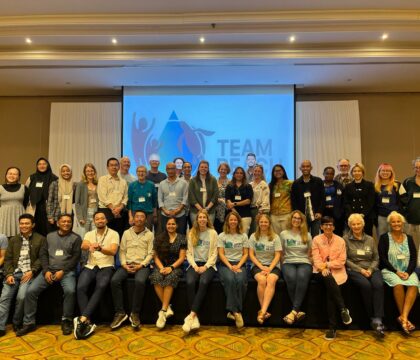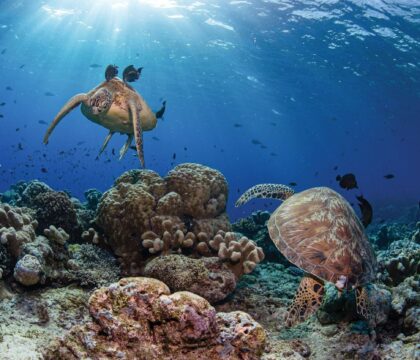January 18, 2024 • Travel Ideas
Many of us dream of the wild places, corners still unmarked by humans. For those, the ocean calls. And there may be no better way to immerse oneself in the wild than to snorkel coral reefs where the ocean—a realm we can only glimpse—leaves its most colorful fingerprints.
Looking for the best snorkeling in the world? Oceanic Society is here to guide you. Whether you wish to glide next to whale sharks off the coast of Komodo or float through Palau’s jellyfish lake, in this article we’ll introduce you to some of the best snorkeling options in the world. Though this list is by no means exhaustive, we hope these destinations will help catalyze your next ocean escape.
1. Raja Ampat, Indonesia
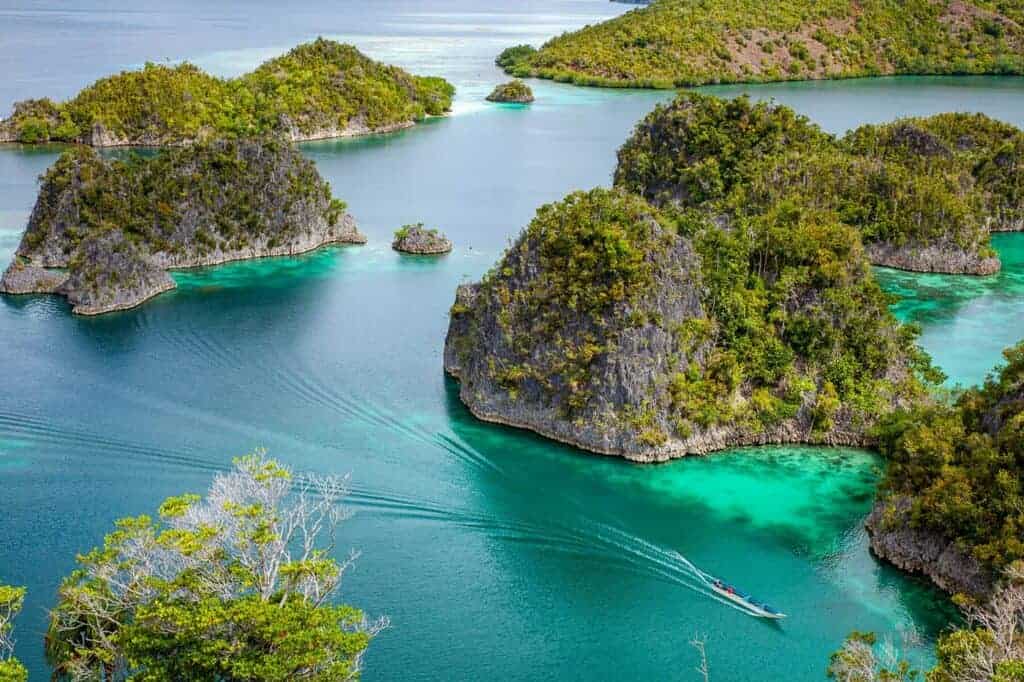
Those looking for the best snorkeling in the world cannot miss the quiet coves of Raja Ampat, Indonesia, jewel of the Coral Triangle, a region regarded as the most biodiverse tropical coral reef system in the world. Here, you can observe staggeringly diverse marine habitats, where isolation has limited human impact and reefs are famously resilient to climate change-induced bleaching.
Sparsely populated islands, few tourists, abundant wildlife, and easy access to warm, calm, and shallow reefs make Raja Ampat a dream for snorkelers, beginner to expert.
What will you see? More than 1,550 fish species including favorites like seahorses, mantis shrimp, bumphead parrotfish, and tasseled wobbegong sharks inhabit the dazzling coral reefs of Raja Ampat. The region also hosts more than 75% of the world’s known coral species. Meanwhile, sea turtles, sperm whales, manta rays, cuttlefish, reef sharks, and the enigmatic walking sharks, can be readily found.
Where to stay? The ultimate Raja Ampat experience is by liveaboard. Sail in comfort between lush limestone and volcanic islands that dot the seascape while visiting world-class snorkel locations.
When to go? October through April, the dry season, is best for clear waters, calm seas, and viewing manta rays.
2. Turneffe Atoll, Belize
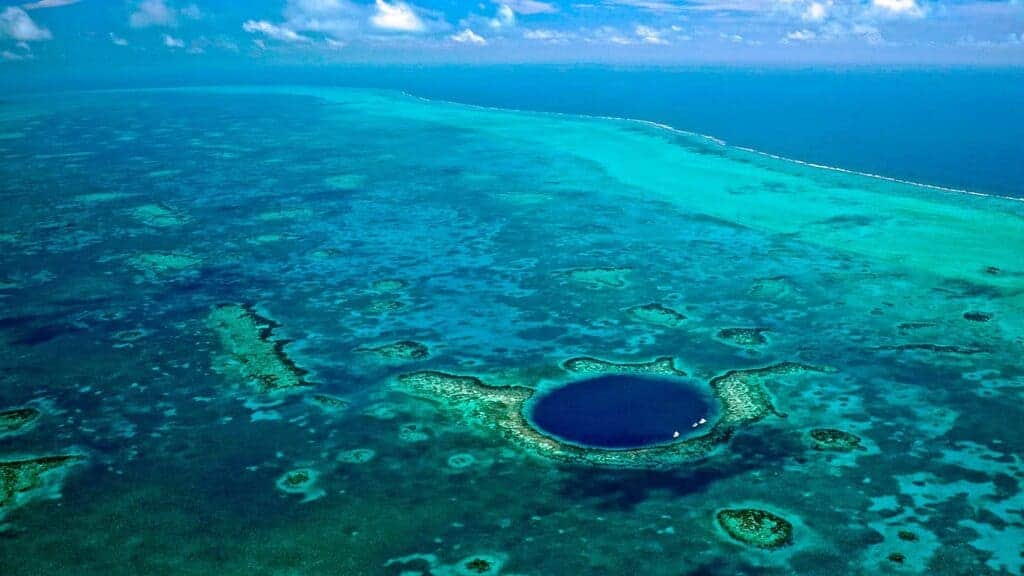
The Caribbean waters of offshore Belize host the second largest reef system in the world, the Belize Barrier Reef. Crystal waters and dazzling marine ecosystems stretch between uninhabited islands, sprawling mangrove forests, and coastal lagoons. The Belize Barrier Reef is renowned for showcasing a diverse collection of reef types in a contained area. Turneffe Atoll, a picturesque set of coral islands, offers an ideal hub for the surrounding marine gardens.
Warm, shallow waters, a myriad of tropical fish, and the opportunity to visit the famous Great Blue Hole make Turneffe Atoll a top choice for the best snorkeling in the world.
What will you see? Sharks dwelling within the Great Blue Hole are iconic. Loggerhead sea turtles, angelfish, butterflyfish, the Antillean manatee, bottlenose dolphins, and over 500 tropical fish species live in the bustling coral reefs surrounding the island.
Where to stay? Oceanic Society-led snorkeling tours make our base at the Turneffe Flats Lodge. Visitors enjoy comfortable villas and cabanas with seaside views, as well as convenient departures to top snorkel sites in the region such as Half Moon Caye, the Great Blue Hole, and the Canyons.
When to go? Dry season, between November and April, which sees calm waters and clear weather, ideal for snorkeling and boating between the sandy islands.
3. Komodo National Park, Indonesia
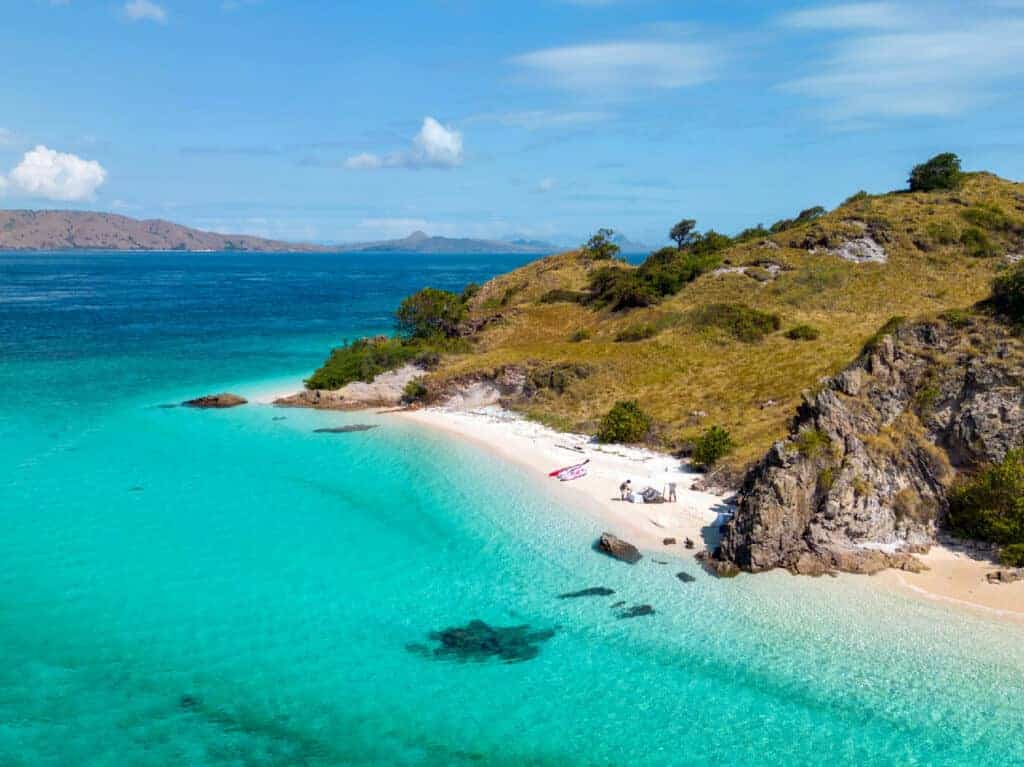
Komodo National Park perhaps suffers a disservice by its singularly iconic lizard. Many people overlook the dozens of untouched islands surrounded by vivacious tropical reefs, which contain some of the best snorkeling locations in the world. Like Raja Ampat, Komodo National Park resides in the Coral Triangle, the global epicenter of marine biodiversity. The rugged islands that make up the park beckon the adventurous. Hike through jungle to beaches of pink sand or swim in reefs shrouded in volcanic gas.
What will you see? Like its lizards, Komodo is renowned for giants. Manta rays, crocodilefish, whale sharks, sea turtles, giant trevally, and Napoleon wrasse are common. If giants aren’t for you, the reefs host a plethora of tropical fish species including the tiny and mysterious pygmy seahorses.
Where to stay? Komodo National Park is best experienced on a liveaboard. Not only are there no hotels in the park, but a Komodo liveaboard also allows you to sail in comfort between each world-class snorkel site and visit spots that are off the beaten path.
When to go? Weather is clearest and calmest between April and November. Avoid visiting during the wet season, between December and March, which often means rough surface conditions and even blocked access to certain parts of the park.
4. Aldabra Atoll, Seychelles
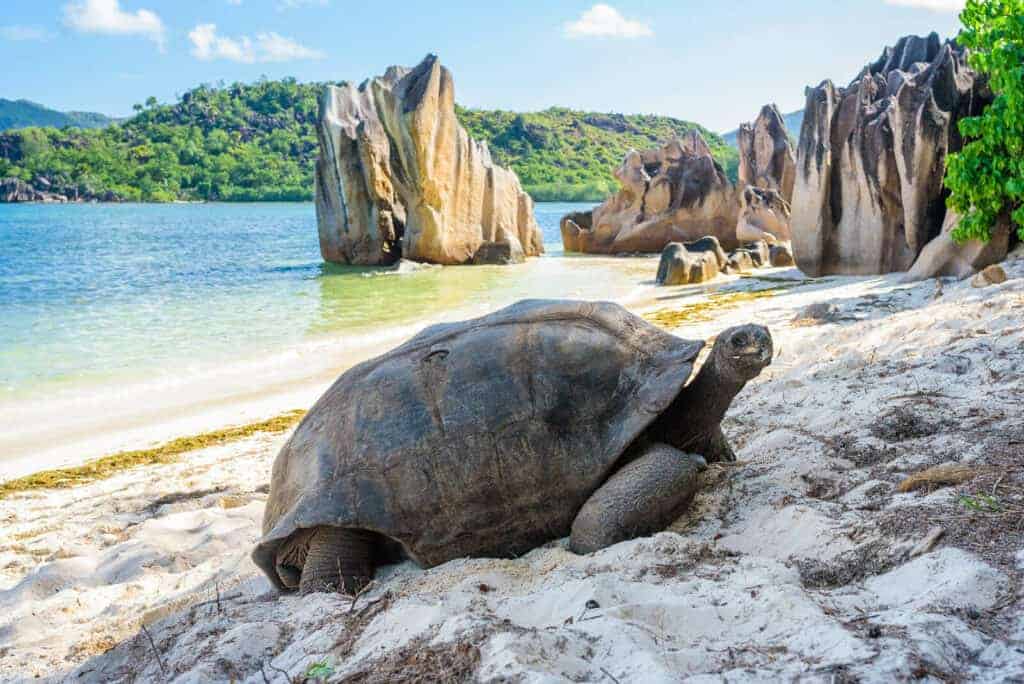
Jutting from the Indian Ocean like shards of giant limestone are the islands of Aldabra Atoll, quite literally raised coral reefs enclosing a shallow lagoon. These four remote coral islands and numerous islets make up one of the largest atolls in the world. Nearly untouched ecosystems make it a perfect destination for wildlife enthusiasts. Snorkel amongst flourishing coral reefs and abundant fish or watch some of the 152,000 giant tortoises – the largest population in the world – stomp along the rocky coastline.
What will you see? In addition to the endemic Aldabra giant tortoises, the coral islands are an important nesting ground for green and hawksbill turtles. The reefs are renowned for their health and are home to an abundance of fish species. Giant manta rays, a plethora of tropical fish, and species that are rare elsewhere, like humphead (Napoleon) wrasse, can be seen here.
Where to stay? Aldabra has no tourist facilities. These remote islands are best experienced by liveaboard, which allows travelers ample opportunity to fully experience the island. Due to strict protections by the Seychelles government, a permit is required to visit Aldabra Atoll. Traveling with a trusted tour operator is a must to experience this remarkable island.
When to go? April, May, October, and November are best for calm weather and avoiding the harsh winds that occasionally whip over the islands.
5. Alor, Indonesia
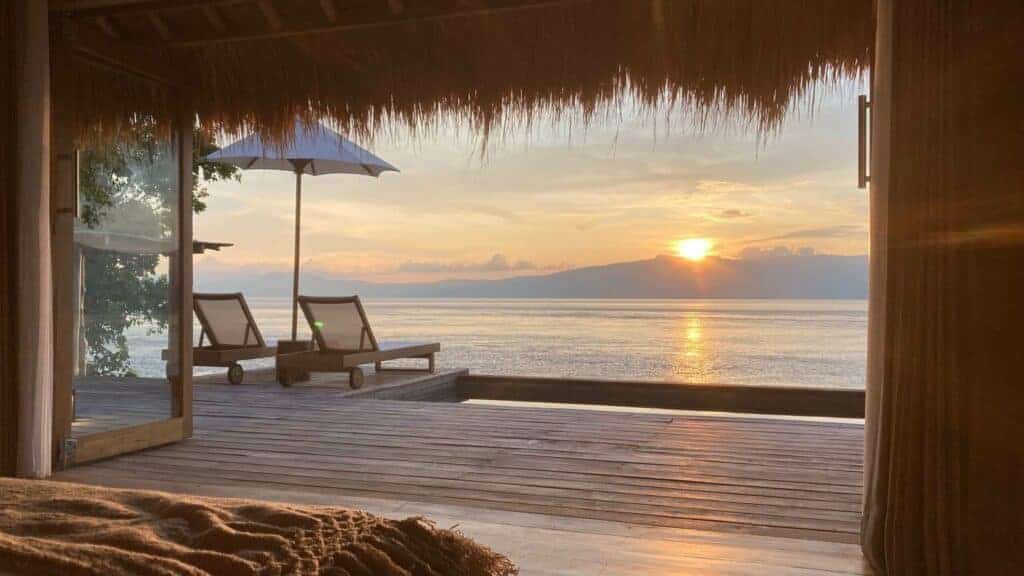
The Alor archipelago is one of the least visited areas in Indonesia, yet lies at the heart of the region’s Coral Triangle with some of the most diverse and healthy marine ecosystems in the world. Alor’s almost entirely off grid, volcanic islands are covered in jungle and flanked by sprawling, pristine reefs seemingly lost to time. Not only are new reefs discovered each year, but Alor also hosts the bustling Pantar Strait migratory corridor, where blue whales are commonly seen. Few people, incredible accommodation, and crystal clear waters (up to 130 feet visibility) make Alor a top choice for the best snorkeling in the world.
What will you see? In addition to the plethora of fish species, including ghost pipefish, scorpionfish, a range of sharks, mosaic-like nudibranchs, and the enormous sunfish (Mola mola), the waters of Alor also host dugongs, thresher sharks, and over 21 cetaceans – including blue whales – that migrate through the Pantar Strait.
Where to stay? SAVU South Alor is a set of sustainably built beach cottages – some perched on the cliffside – nestled next to the Pantar Strait, with panoramic views of the surrounding Savu Sea. Blue whale sightings are so common that staff ring a cowbell after each spotted spout. While many reefs located on the shores of resorts disappoint, this is not the case at SAVU. Each cottage is just steps away from world-class snorkeling.
When to go? Dry season, April to October, is best for water visibility and easy snorkeling conditions. Oceanic Society tours in Alor take place in September and October, which is perfect for spotting blue whales migrating across the Pantar Strait.
6. Gardens of Queen, Cuba
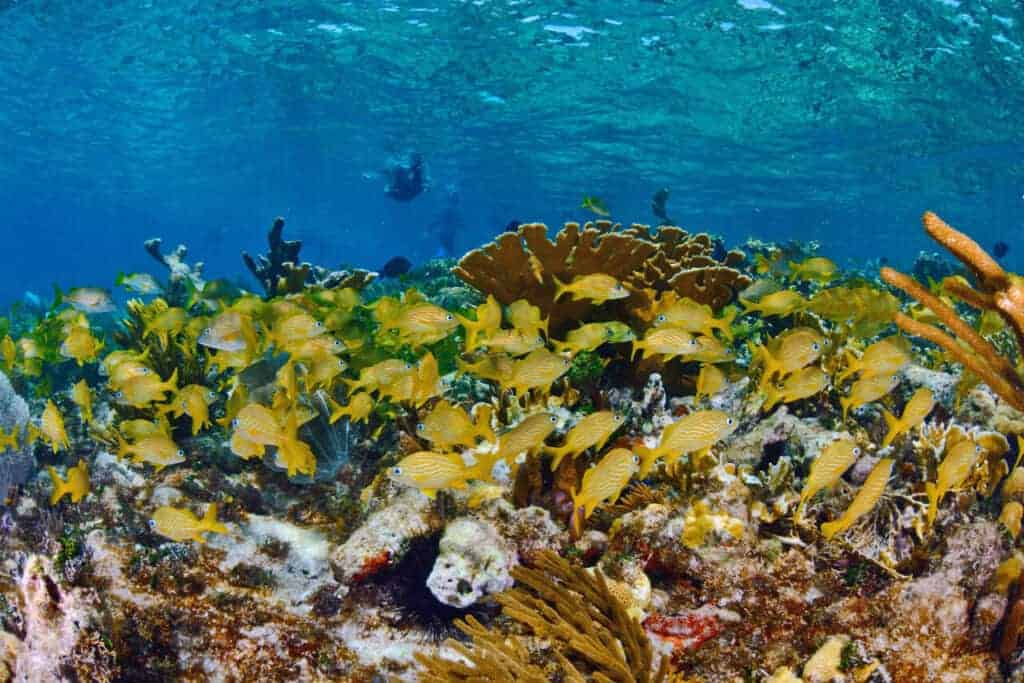
The Gardens of the Queen (Jardines de la Reina) are regarded as the most pristine reefs in the Caribbean. Since the Cuban government designated the 250 coral and mangrove islands as a “no take” marine protection zone in 1996—ensuring stringent conservation protections and making it the largest such zone in the Caribbean—the health of the wildlife and corals has bloomed. Fish populations have increased 30% and shark populations 10% compared to populations outside the park. With rich snorkeling traditions (Castro himself was an enthusiast), few tourists, exquisite surrounding natural wonders, and pristine marine wildlife on display, the Garden of the Queen is a top choice for best snorkeling in the world.
What will you see? Seagrass beds, mangroves, and coral reefs weave together to create an ideal foundation for marine life. Reef grazers, such as rainbow parrotfish, and a healthy group of Caribbean reef sharks exemplify the thriving ecosystem. The reefs are also a sanctuary for various endangered species, including hawksbill sea turtles, elkhorn coral, and goliath groupers.
Where to stay? Due to strict regulations by the Cuban government and special visa requirements for US citizens, visiting the Gardens of the Queen requires a trusted tourism operator. The only way to explore Gardens of the Queen is by liveaboard, allowing visitors to immerse themselves in the ocean wonders while cruising in comfort. Very few operators are allowed to bring tourists here, with just a few thousand snorkelers and divers allowed each year, so be sure to plan your trip in advance!
When to go? Dry season, between November and April, is ideal for calm and clear waters. Visit during shoulder months November and March to keep the idyllic conditions with fewer tourists.
7. Rock Islands, Palau
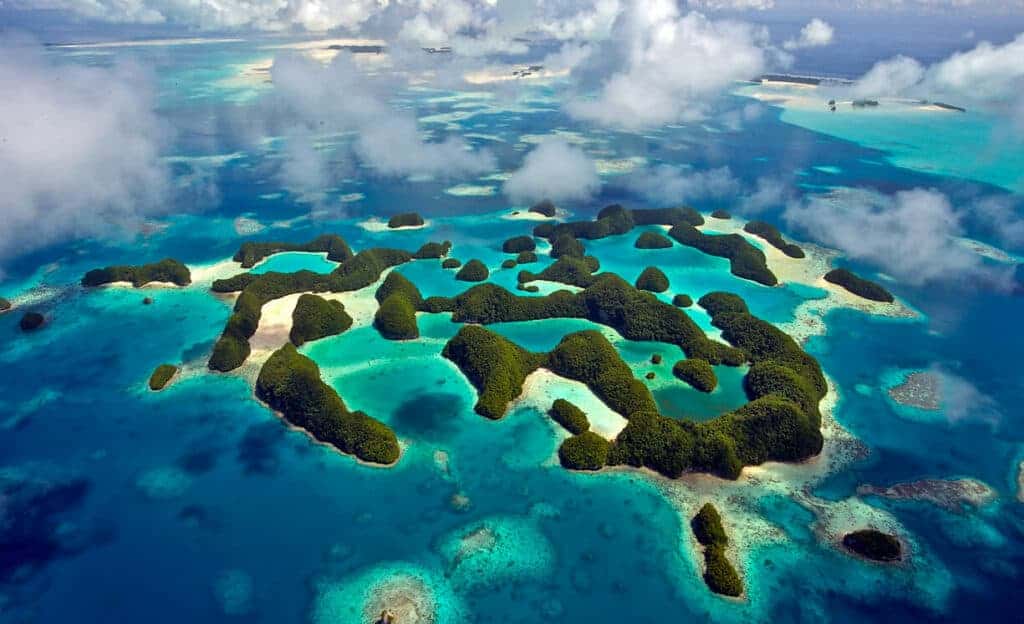
The Rock Islands of Palau, an isolated archipelago in the South Pacific, is packed with over 1,500 species of fish and over 450 species of corals, making it one of the densest concentrations of marine life in the world. The Rock Islands are largely uninhabited spires of jungled limestone, and boast a variety of top snorkel sites, ranging from mangrove-rimmed lakes to aquatic limestone canyons. And for those looking for a dream-like experience, snorkelers can hike to the top of one such island and snorkel the ethereal Jellyfish Lake.
What will you see? For shark lovers, there is nowhere better. The entire territorial waters of Palau are protected as a shark sanctuary. Blacktip, whitetip, and gray reef sharks are commonly seen. Palau’s Jellyfish Lake is a unique wildlife experience. For those looking for more traditional snorkeling, the Rock Islands’ reefs host a plentiful assortment of fish, including humphead (Napoleon) wrasse, mandarinfish, multiple species of sweetlips and butterflyfish, clown triggerfish, and the pajama cardinalfish, to name a few.
Where to stay? Koror offers the perfect home-base for day-trip expeditions to the best Rock Island snorkel sites, including Turtle Cove, Soft Coral Arch, and Ngemelis Wall.
When to go? Conditions are calmest and best for snorkeling between November and May. This window sees orange spine surgeonfish and Moorish idols congregate, drawing sharks.
8. Galapagos Islands, Ecuador
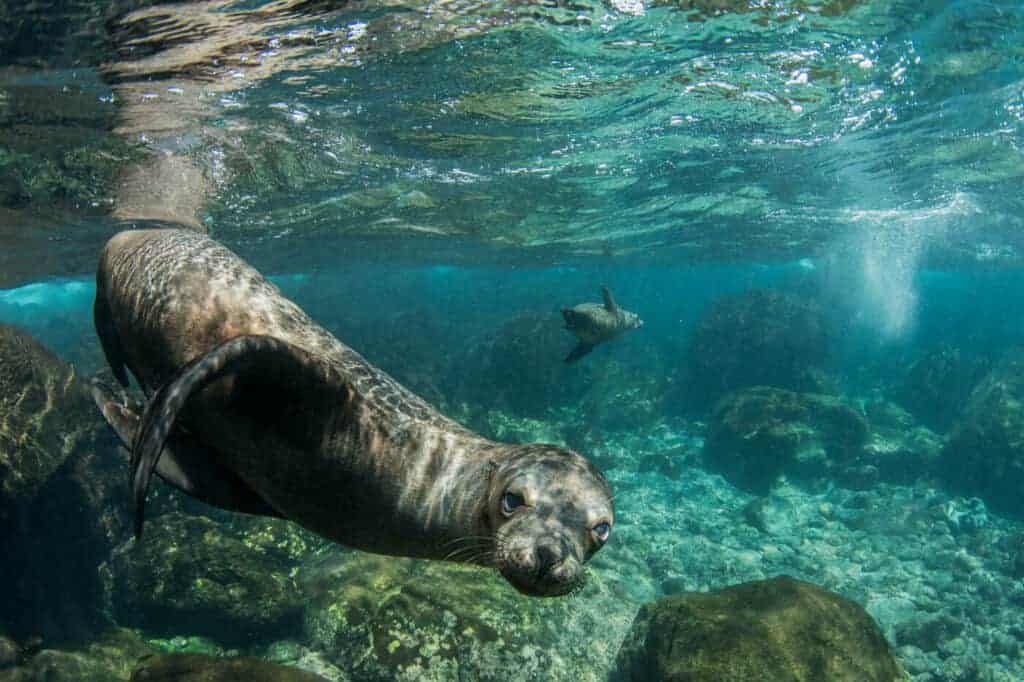
The Galapagos, made famous by Darwin’s evolutionary studies, offers travelers a unique opportunity to engage with wildlife. The islands developed in isolation from humans and other large predators, meaning animals – like tortoises and marine iguanas – are relatively fearless. Close encounters with friendly wildlife, gorgeous windswept volcanic islands, black sand beaches, rocky coves, and dozens of snorkel sites easily accessible by either land or boat makes the Galapagos a great option for those seeking the world’s best snorkeling.
What will you see? The archipelago is famously diverse. Depending on your snorkel site you will see a range of species including sea lions, marine iguanas, sea turtles, tropical fish, and even penguins.
Where to stay? The isolated archipelago – 600 miles off the coast of Ecuador – is ideally experienced aboard a cruise, which allows travelers to bounce between wildlife hotspots, like Isabela Island and Santiago Island. For a trip of a lifetime, join a Galapagos cruise aboard a small ship for a more intimate experience and excellent service.
When to go? There really is no “best time” to visit Galapagos – this is a great destination year-round.
9. Marovo Lagoon, Solomon Islands
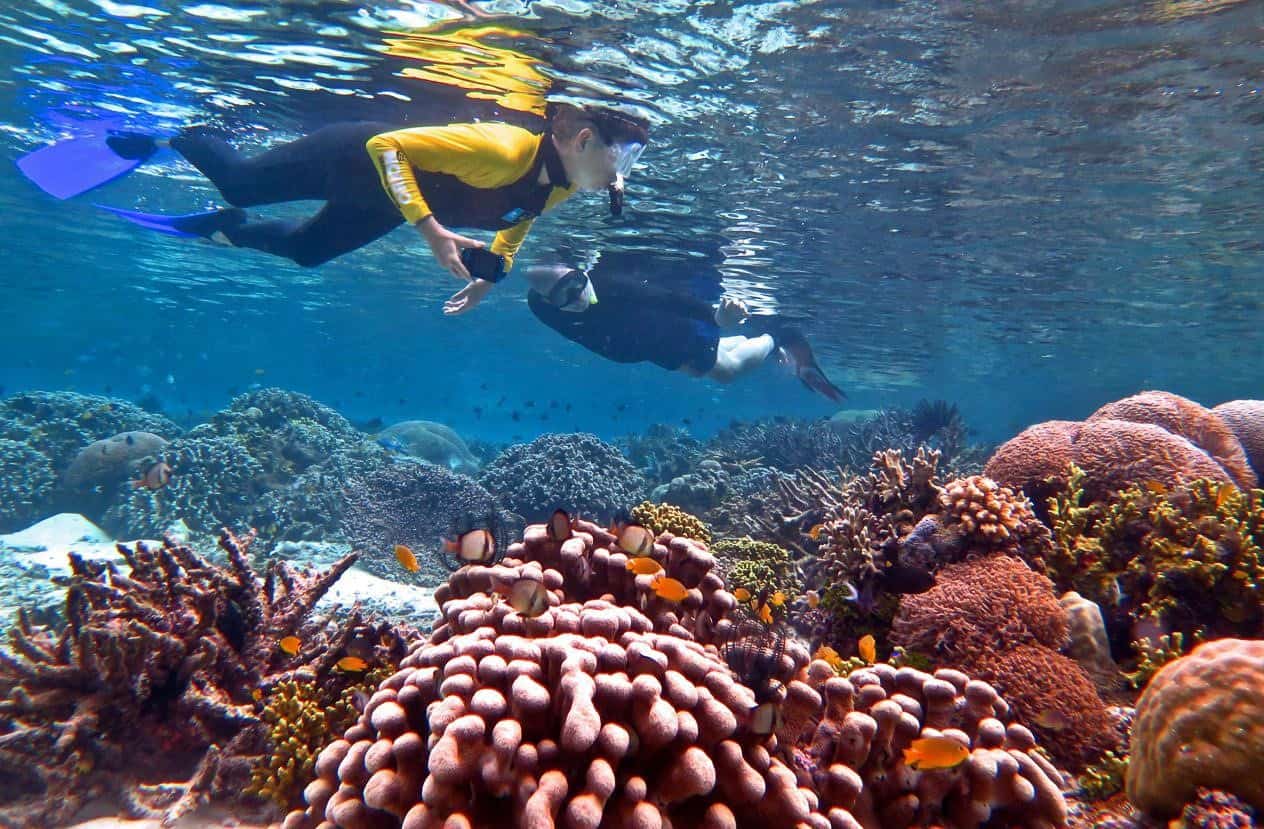
Marovo Lagoon is the world’s largest enclosed reef lagoon (perfect for shallow snorkeling) and is designated a UNESCO World Heritage Site. The Solomon Islands’ vibrant ecosystem is outmatched in biodiversity only by Raja Ampat. The lagoon is massive, 700 square kilometers, and sandwiched between swathes of mangroves and volcanic islands covered in some of the last remaining lowland rainforests. For the ultimate snorkeling trip, visit the nearby mountainous Tetepare Island, the largest uninhabited island in the South Pacific, which is also lined with beautiful coral reefs.
What will you see? Abundant tropical fish living in the lagoon are joined by dugongs, dolphins, and even orcas. Whales commonly visit the surrounding Solomon Sea. Lucky travelers may have the chance to swim with blue whales or see the mysterious Omura whale, only officially discovered in 2004. There are even rumors of unidentified beaked whales drifting through the waters…
Where to stay? Tour the Solomon Islands by a liveaboard to see all these isolated islands have to offer. Cetacean biologists lead Oceanic Society tours in the region. Search for whales and dolphins while on deck a luxury cruise. Immerse yourself in the near countless Edens that dot the seascape.
When to go? Clear, warm, and calm waters are present all year long. December and January are part of the wet season which experience brief but heavy showers.

